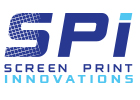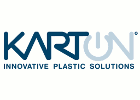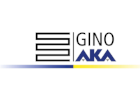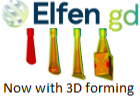Glaston, the glass processing industry’s innovative technology leader, has committed to set near-term company-wide emissions reductions in line with climate science with the Science Based Targets initiative (SBTi). The targets have been submitted to the SBT climate organization for validation. The commitment includes decreasing the direct scope 1 and 2, and especially indirect scope 3 emissions by 2032.
Glaston Corporation commits to reducing absolute scope 1 and 2 GHG emissions by 50% by 2032, compared to the 2022 base year. The target is in line with limiting global warming to 1.5°C, which is currently the most ambitious criterion for setting science-based targets. Glaston also commits to reducing the scope 3 GHG emission intensity by 58% per square meter of sold glass processing capacity within the same target period. Next, the target will be evaluated by the SBTi, and Glaston estimates that the final, validated target will be published during the second half of 2024.
“Promoting sustainable development is an integral part of our business strategy as our technologies enable more energy-efficient and safe glass products. Reducing our carbon footprint is one way to demonstrate our commitment to sustainability, and frontrunner position. In 2022, we achieved our first emissions reduction target when we reduced CO2 emissions from our own operations by over 50% in relation to net sales compared to the 2020 level. That was only the first small step in this work as the biggest emissions driver for us is the value chain and especially the lifetime electricity consumption of the equipment we have delivered to our customers. We therefore needed to raise the bar and have now worked on our new emissions reduction targets in line with the SBTi’s criteria,” says Päivi Lindqvist, Glaston’s CFO and sponsor of strategic cornerstone project for sustainable business.
Ambitious target
Glaston’s scope 1 (direct greenhouse gas emissions) and scope 2 (purchased energy emissions) form a minimal share of Glaston’s total emissions. Around 99% of all emissions related to Glaston's activities have been generated in the company's value chain (scope 3) and the most significant sources of emissions are the use of sold products and purchased goods and services. In 2022, Glaston’s total emissions were 685,641 tCO2e, of which the scope 1 and 2 emissions were 1,491 tCO2e and the scope 3 emissions were 684,150 tCO2e.
As glass processing, especially the glass tempering process requires a certain amount of energy and Glaston has already for decades worked on reducing the electricity consumption of its products, further improvements are not easy to achieve. Marko Mökkönen, Head of Sustainability at Glaston, characterizes the scope 3 reduction target as ambitious.
“In order to reach the scope 1 and 2 targets, Glaston plans to phase out the use of natural gas, and other fossil energy sources in its operations and further increase the share of renewable energy significantly. To reach the scope 3 intensity target, Glaston has to further improve the energy efficiency of the sold products, support customers in their emissions reduction initiatives, and implement measures to decrease emissions in other parts of the value chain like purchased goods,” says Marko Mökkönen.
What is the Science Based Targets initiative (SBTi)?
The Science Based Targets initiative (SBTi) is a collaboration between World Resources Institute (WRI), the World Wide Fund for Nature (WWF), the United Nations Global Compact, and the Carbon Disclosure Project (CDP). Companies committed to the initiative set science-based emissions reduction targets for their operations in accordance with the Paris Agreement, which support measures to limit global warming to 1.5 °C.

























